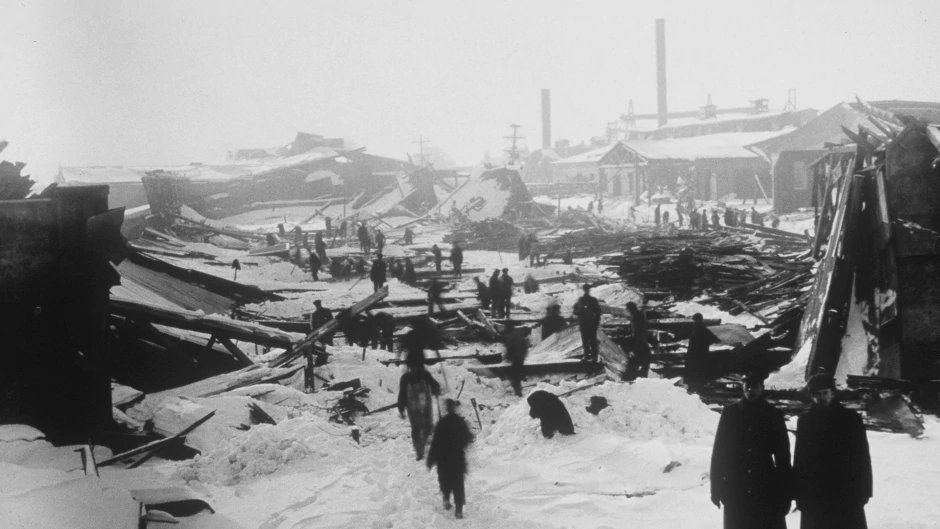
This morning a memorial service in Halifax's Needham Park will mark the 100th anniversary of the Halifax explosion. It was 1917 and World War I, so Halifax Harbour and the Bedford Basin were filled with war and supply ships from a number of nations. Two of those ships collided, one filled with munitions. The resulting explosion tore apart the north end of Halifax, killing more than 2,000 people almost instantly, and injuring thousands more. The shattered glass of imploding residential windows blinded many who were watching the burning ships and even today arborists are careful about taking down older trees because some have hundreds of metal shards imbedded in them. To make matters worse, response efforts were hampered by a blizzard the next day which dropped 40 centimetres of snow on the area.

I ministered in a congregation in downtown Halifax nearly twenty years ago and I had several elderly parishioners who could remember the explosion vividly, even though they were children at the time. I wish I'd taken time to write down their recollections.
Canadian readers will likely know the dramatic Heritage Minute which tells the story of Vince Coleman, a telegraph dispatcher who heroically warns an approaching train of the impending disaster. Watch it and you'll see that there isn't a single person of colour depicted on the streets of the city. https://www.youtube.com/watch?v=rw-FbwmzPKo
Yet we are aware now that a number of black people died in what was known as Africville, a community which was eventually bulldozed by the government in the 1960's. There was also a Mi'kmaq aboriginal settlement where an unknown number died with even less recognition. There is also historical evidence that recovery payments to people of colour were consistently denied or at least 20% less than to white people making claims.
There is currently a play in Halifax exploring the experiences of those affected by the disaster, including African Canadians and Mi'kmaq. (image above) Still, there isn't much which recognizes this component of the story, including in the current museum exhibit about the explosion. I confess that even though I took a strong interest in Africville while we lived in Halifax it didn't occur to me that the community was close at hand to the explosion site. This is another reminder that history is written by the dominant culture, often without much thought to those who are most vulnerable.
Thoughts?

No comments:
Post a Comment